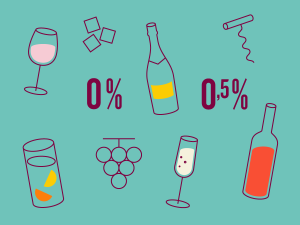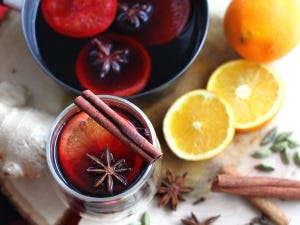When it comes to pairing food with alcohol, wine is the first drink that comes to mind: white with fish, red with meat, and so on. Beer has a niche too (beer and cheese, anyone?). But what about cocktails? For some reason, they are often overlooked.
And yet, the art of mixology was built on combining diverse ingredients and creating the perfect balance between flavours and aromas. Notes of herbs and spices, citrus and berries, smoky and roasted, sweet, bitter, and acidic profiles… all are likely to be found in a cocktail. This almost-infinite range of possibilities means you can create pretty precise pairings. Better yet, you can adapt the choice of ingredients and aromas to your liking.
So where to start? Here are a few winning combos to get you inspired.


Birds of a feather…
In traditional southern US fashion, bourbon is a BBQ staple. A natural pairing if ever there was one, given that both the low-and-slow cooked meat and barrel-aged bourbon share similar smoky and caramelized notes. When the aromas on your plate are replicated in your drink, you get molecular harmony, a phenomenon François Chartier is known for.
So, grilled and smoked meats go great with whisky-based cocktails, whether it be bourbon, scotch whisky, or a more rugged rye. Mezcal, with its smoky notes, would also be a good option.
The combination of herbs and spices common in amaro or vermouth makes for another harmonious connection between your food and drink. Manhattan, Old Fashioned, Boulevardier, and other similar cocktails pair perfectly with saucy ribs, steak in a Port and mushroom sauce, or wild game served with a berry sauce. Is there maple syrup in your marinade or sauce? Add a small drop to your cocktail to take your pairing to the next level!
You can match most of your food in this way: adding ginger beer to a cocktail served with sushi, a touch of crème de menthe when you’re plating a herby dish, or coffee or chocolate liqueur to pair with desserts with roasted aromas. If you have some freshly squeezed lime juice for your tacos, add a few drops to a margarita or other tequila and citrus-based cocktail!
Complements and contrasts
You don’t always have to pair similar aromas together – quite the contrary! The classic pairing of Bloody Mary or Bloody Caesar with brunch works for the exact opposite reason – the tomato’s acidity and spiciness serve as the perfect contrast to most bacon-and-egg dishes. The same goes for spritz and a Mediterranean spread (think salty hors d’oeuvres or olives) – the cocktail’s refreshing nature is what makes the transition from one flavour to another so seamless.
Many people like to squeeze a little lemon onto their white fish, so it comes as no surprise that a citrus cocktail would pair nicely with a filet of salmon or turbot topped with fresh herbs. Another interesting option, one that would add a layer of complexity to the pairing, would be vermouth or a herb-based liqueur like chartreuse.
Why not pair spicy Indian food with a gin fizz? The combination of cream, egg white, and citrus will temper the heat, much like the traditional glass of lassi does. You could even whip up an alcoholised version of the lassi, using a clear liqueur and tropical fruit.
In Scandinavian countries, smoked fish and shellfish are often served with aquavit, a distilled spirit flavoured with spices, such as coriander and cumin. Flavoured vodka or Quebec-made gins with the “Forest Plant Boreal” taste tag would be a great alternative to pair with smoked fish or lobster. Bitters and syrups (celery, orange peel, cinnamon, and so on) are also a fun way to add some heat to your cocktails instead of your dish.
When you think about it, cocktails are recipes, just like appetizers, main courses and desserts. Approach your cocktails in the same way a kitchen chef approaches their dishes, making sure all the ingredients work well together, and get ready to discover a whole new world of flavours.


The perfect pour
Because cocktails are often made with hard liqueur, it’s important that you pay heed to the amount you put in your glass, especially if you plan on serving several pairings during the meal, as you would with wine. Depending on its ingredients, a 2 or 3-ounce cocktail can easily equal 4 to 6 ounces of wine. By using sparkling wine, juice, soda, or sparkling water, you can moderate the alcohol level in the cocktails you serve, ensuring you and your guests can fully savour all the aromas. Serving a beer or water between cocktails is another way to cleanse the palate and get it ready for new flavours.
 Access to SAQ Inspire personalized services and store inventories are unavailable at the moment.
Access to SAQ Inspire personalized services and store inventories are unavailable at the moment. Free in-store delivery with purchases of $75+ in an estimated 3 to 5 business days.
Free in-store delivery with purchases of $75+ in an estimated 3 to 5 business days. 










